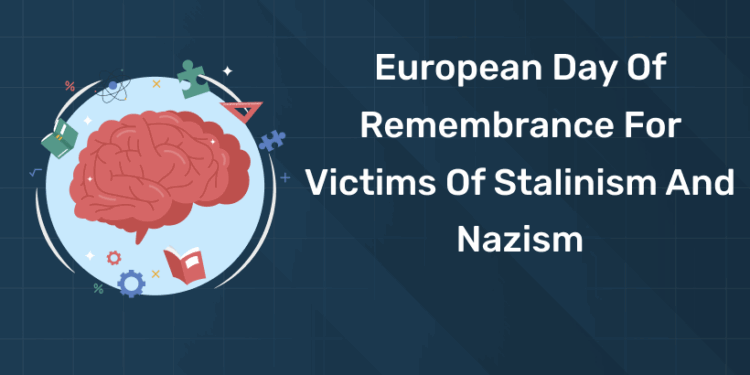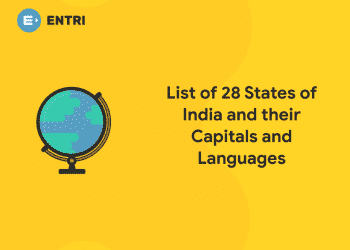Table of Contents
The European Day of Remembrance for Victims of Stalinism and Nazism, also known as Black Ribbon Day in some countries, is an international day commemorating victims of totalitarian regimes such as Stalinism, Communism, Nazism, and Fascism. It represents the rejection of “extremism, bigotry, and oppression” and is observed on August 23.
Since 2009, the European Union’s institutions have celebrated it yearly as “a Europe-wide Day of Remembrance for the victims of all totalitarian and authoritarian regimes, to be honored with dignity and impartiality,” as declared by the European Parliament in 2008/2009.
The date of 23 August was chosen to coincide with the signing of the Molotov-Ribbentrop Pact, a 1939 non-aggression agreement between the USSR and Nazi Germany that included a protocol designating the spheres of influence of the two powers over Romania, Poland, Lithuania, Latvia, Estonia, and Finland. Jerzy Buzek, the president of the European Parliament, referred to the pact as “the collusion of the two worst forms of totalitarianism in human history” in 2010.
European Day of Remembrance for Victims of Stalinism and Nazism 2025 Date – August 23
In this article readers can get a glimpse on
- History and Significance of European Day of Remembrance for Victims of Stalinism and Nazism
- European Day of Remembrance for Victims of Stalinism and Nazism Observance
- European Day of Remembrance for Victims of Stalinism and Nazism Quiz
European Day of Remembrance for Victims of Stalinism and Nazism – Dates
1: Who was the first woman President of India?
| Year | Date | Day |
| 2022 | August 23 | Tuesday |
| 2023 | August 23 | Wednesday |
| 2024 | August 23 | Friday |
| 2025 | August 23 | Saturday |
| 2026 | August 23 | Sunday |
Free UPSKILLING Courses!
Take your first step toward mastering in-demand skills, acing interviews, and securing top-tier jobs with Entri's free upskilling courses.
Start Learning!European Day of Remembrance for Victims of Stalinism and Nazism – History
One of the two days marked by the European Union alongside Europe Day is the European Day of Remembrance for Victims of Nazism and Stalinism. According to the European Union, the holiday stands for the rejection of extremism, intolerance, and oppression. Its goal is to honor the memories of those who were killed or deported in large numbers while advancing democratic principles to uphold peace and stability in Europe.
Black Ribbon Day first appeared in the 1980s, at the height of the Cold War. This day was observed by the refugee communities in Western nations like the U.S. and Canada to commemorate the crimes committed by the Soviet Union’s communist government that sparked the 1989 Revolution. The phrase “Black Ribbon Day” was created by Markus Hess of the Estonian Central Council in Canada to describe a day when a ribbon was worn in protest. From that point forth, the agitation spread to Europe and the Baltic States in addition to North America. Later, it received official recognition from the European Union. The European Parliament established the European Day of Remembrance for Nazism and Stalinism Victims in September 2008. In Warsaw, Poland, the first official observance of this day was held in 2011.
It is important to remember the horrifying deeds committed under the Nazi and Stalinist regimes so that no one ever forgets and never goes back. Nazism was infamous for its repressive rule and attempts to exterminate an entire race of people because they considered they were inferior, which resulted in the so-called “holocaust,” which killed almost two-thirds of Europe’s Jewish population.
European Day of Remembrance for Victims of Stalinism and Nazism – How to observe?
- Wear a black ribbon to honour the occasion. This is a sign of support for those who perished at that time.
- Inform people about the day. To raise awareness, consider creating a simple social media post or planning an event to mark the day.
- A movie that you may watch with friends or family can be ordered online. There are many films about Nazism and Stalinism, so finding one to watch shouldn’t be too difficult.
European Day of Remembrance for Victims of Stalinism and Nazism – Significance
The experiences of mankind are connected with the tragedies committed by extremist governments on their own people. The Nazi era in Germany was infamous for its oppressive laws and attempts to murder and eradicate an entire race of people because they believed Jews to be inferior.
Untold numbers of people have died as a result of the barbarism in these systems, and today’s events serve to warn people that an authoritarian, fundamentalist administration will only bring possible death and obliteration.
- The day honors those who died under authoritarianism. Given the number of fatalities and displaced individuals, it is only fitting to remember the suffering they endured.
- Despite the challenging circumstances, some people rose up to fight against the oppression. They deserve to be honored because they are heroes.
- Those were dreadful periods in human history. Every nation in the globe is reminded on this day not to return to those times and the havoc it caused.
Free UPSKILLING Courses!
Take your first step toward mastering in-demand skills, acing interviews, and securing top-tier jobs with Entri's free upskilling courses.
Start Learning!European Day of Remembrance for Victims of Stalinism and Nazism Quiz 2025
1. When is the European Day of Remembrance for Victims of Stalinism and Nazism observed?
A) May 8
B) September 1
C) August 23
2. What is another common name for this remembrance day?
A) Liberation Day
B) Black Ribbon Day
C) Peace Day
3. Which pact signed in 1939 is central to this day?
A) Warsaw Pact
B) Molotov–Ribbentrop Pact
C) Munich Agreement
4. Which two countries signed the Molotov–Ribbentrop Pact?
A) Germany and Italy
B) Germany and Soviet Union
C) Soviet Union and Poland
5. What did the secret protocol of the pact decide?
A) Division of Eastern Europe
B) Creation of the United Nations
C) End of World War II
6. Which European institution recognized August 23 as a remembrance day in 2008?
A) European Commission
B) European Parliament
C) European Council
A) Victims of Fascism only
B) Victims of Nazism and Stalinism
C) Victims of Colonialism
8. In which country did the “Black Ribbon Day” movement first start?
A) Canada
B) Poland
C) Estonia
9. Why was August 23 chosen for this commemoration?
A) Day World War II ended
B) Day Molotov–Ribbentrop Pact was signed
C) Day Berlin Wall fell
Want More Engaging Questions?
Download our FREE PDF packed with insightful quiz questions to test your knowledge!
🔽 Click below to get your free copy now! 🔽
European Day of Remembrance for Victims of Stalinism and Nazism Quiz 2025 PDF
The European Day of Remembrance for Victims of Stalinism and Nazism is a powerful reminder of the devastating impact of totalitarian regimes. It highlights the shared pain of millions who endured persecution, deportation, and loss of life under oppressive rule. By remembering these victims, societies across Europe and beyond emphasize the importance of safeguarding democracy. The day also promotes historical awareness among younger generations. It encourages people to learn from the past and reject ideologies of hate. Such remembrance strengthens unity among nations. It ensures that the memory of victims continues to live on.
Marking this day each year also reinforces the collective responsibility to protect freedom and justice. Central and Eastern Europe, in particular, reflect on the heavy price paid under Nazi and Stalinist oppression. But the lessons extend to all nations that value human rights. The commemoration serves as a warning against repeating past mistakes. It inspires dialogue on peace and reconciliation. It unites communities in honoring those who suffered. Most importantly, it calls for a future built on dignity, justice, and mutual respect.
Free UPSKILLING Courses!
Take your first step toward mastering in-demand skills, acing interviews, and securing top-tier jobs with Entri's free upskilling courses.
Start Learning!Frequently Asked Questions
What is the European Day of Remembrance for Victims of Stalinism and Nazism?
The European Day of Remembrance for Victims of Stalinism and Nazism is observed on August 23 each year. It honors the millions of people who suffered under totalitarian regimes, especially during the 20th century. The day focuses on remembering victims of mass deportations, executions, and other crimes. It also encourages people to reflect on democracy and human rights. This day is widely known as Black Ribbon Day.
Why is August 23 chosen for this day?
August 23 marks the signing of the Molotov–Ribbentrop Pact in 1939. This pact was an agreement between Nazi Germany and the Soviet Union. Its secret protocol divided Eastern Europe into spheres of influence. This division led to invasions, occupations, and immense human suffering. The date is symbolic of the collaboration between two brutal regimes.
What is the Molotov–Ribbentrop Pact?
The Molotov–Ribbentrop Pact was a non-aggression treaty signed between Germany and the Soviet Union. It was agreed upon just days before World War II began. The pact included a secret protocol dividing Eastern Europe. This agreement enabled both regimes to expand aggressively without interference. It is remembered as a turning point in history with devastating consequences.
Why is the day also called Black Ribbon Day?
Black Ribbon Day became a symbol of resistance and remembrance in the 1980s. It started as a movement among people of Baltic origin in Canada. They used black ribbons to symbolize mourning for victims of totalitarianism. The name reflects both grief and the demand for justice. It later became an official term for this remembrance day.
Which victims are remembered on this day?
The day honors victims of both Nazi and Stalinist regimes. These include people who faced mass killings, forced deportations, and imprisonment. Jews, Poles, Balts, Ukrainians, and many others were affected. Millions lost their lives or were displaced. The remembrance emphasizes the shared suffering across Europe.
Who officially recognized this day in Europe?
The European Parliament formally recognized August 23 as a day of remembrance in 2008. This decision was part of efforts to promote awareness of past atrocities. It highlighted the importance of remembering all victims equally. Recognition also aims to strengthen the commitment to democracy. The day now holds significance across the European Union.
How is the day observed in Europe?
Different countries mark the day with memorial ceremonies. People hold vigils, lay flowers, and participate in discussions. Educational programs are organized to teach younger generations about history. Politicians and leaders also give speeches reflecting on the importance of freedom. The events aim to ensure the past is never forgotten.
Why is this day especially important in Central and Eastern Europe?
Central and Eastern Europe suffered deeply under both regimes. Countries in this region experienced invasions, mass deportations, and executions. The memory of these crimes still affects families today. For many, August 23 represents a warning against totalitarianism. It is a way to honor local and national histories.
How did the Black Ribbon Day movement begin?
The movement began in Canada in the 1980s. It was organized by people from Baltic communities who sought justice. They wanted the world to recognize crimes committed by both Nazi and Soviet regimes. Peaceful marches and demonstrations were held with black ribbons as symbols. The idea spread globally and influenced Europe’s recognition of the day.
What lessons can we learn from this day?
The day reminds us of the dangers of totalitarian rule. It teaches the importance of protecting democracy and human rights. Remembering victims ensures their suffering is not forgotten. It also helps prevent similar tragedies in the future. The day serves as a call for unity, justice, and peace.












